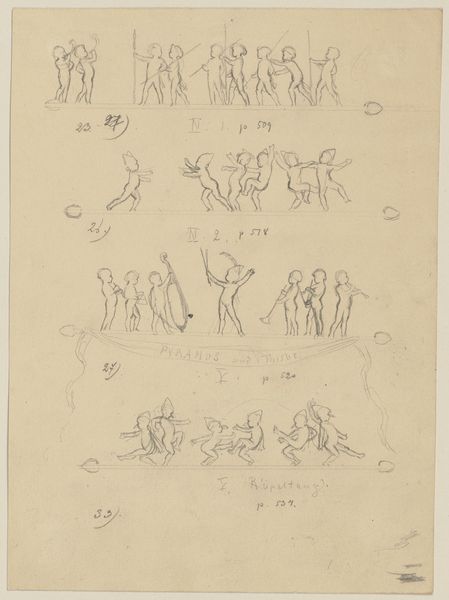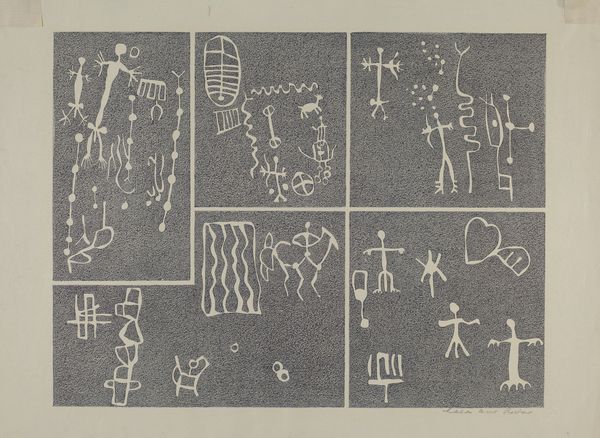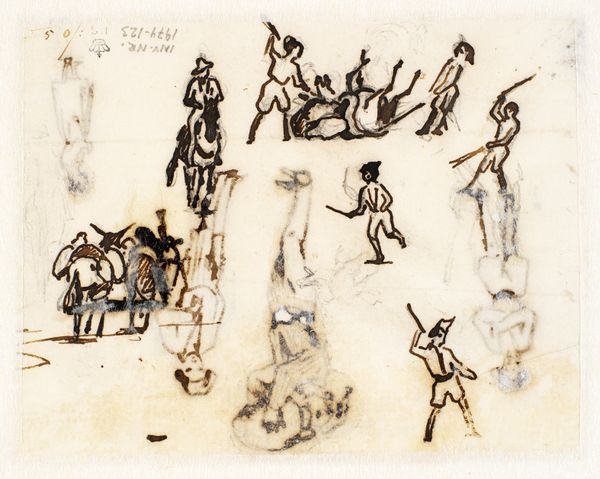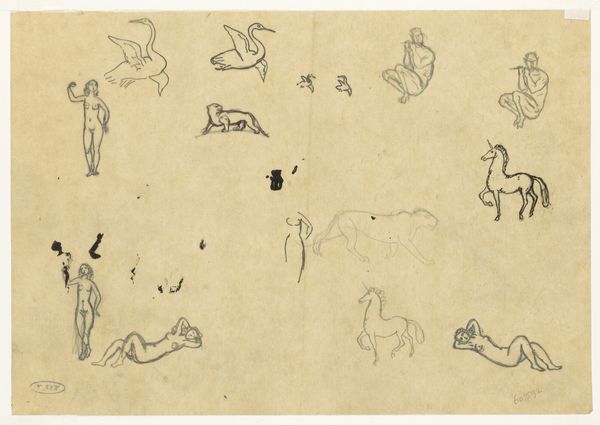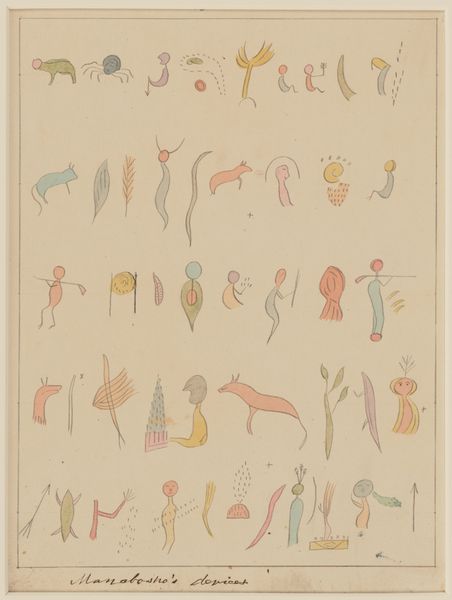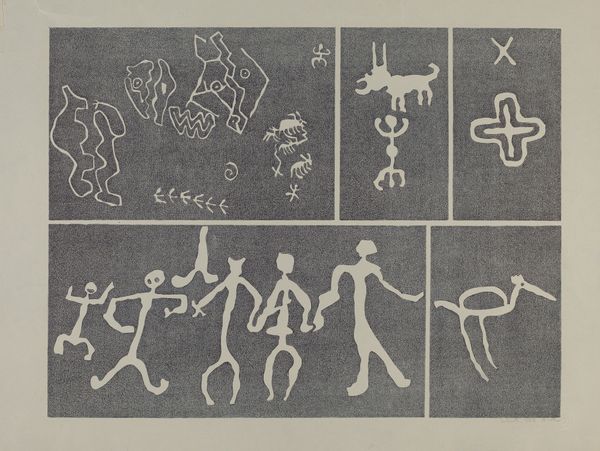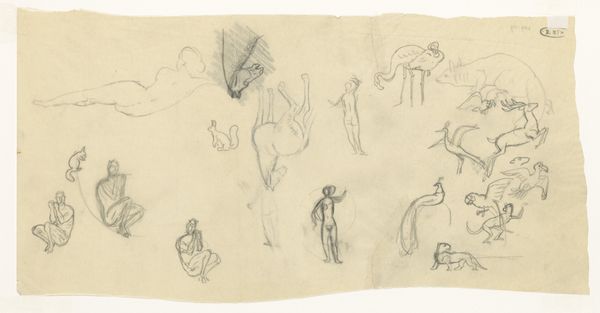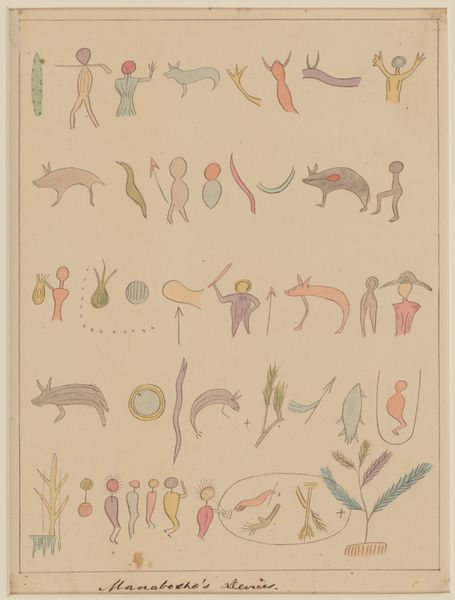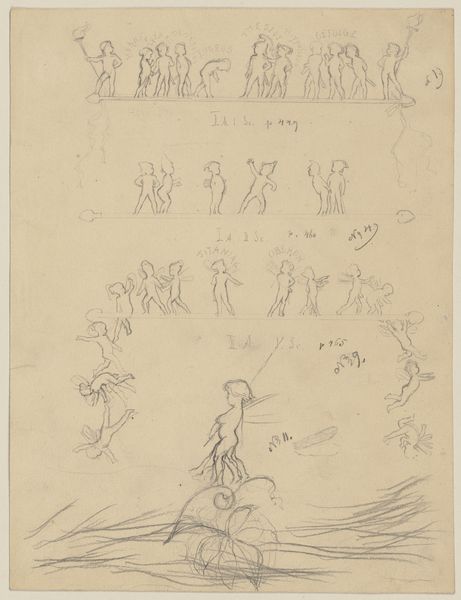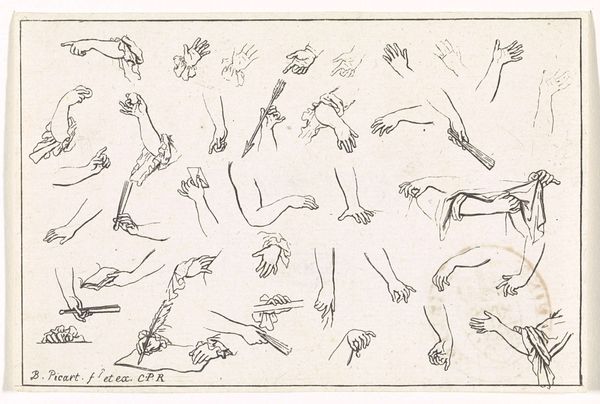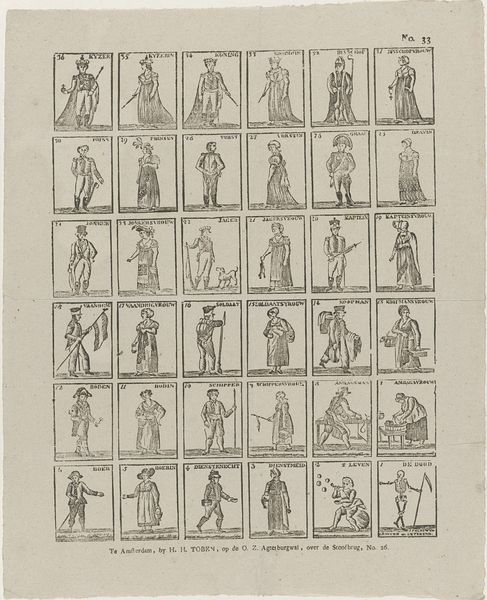
drawing, paper, ink, pen
#
drawing
#
paper
#
ink
#
line
#
pen
Dimensions: 9 7/8 × 13 in. (25.1 × 33 cm) (sheet)17 9/16 × 21 1/2 × 1 1/8 in. (44.6 × 54.6 × 2.9 cm) (outer frame)
Copyright: Public Domain
Seth Eastman created this drawing, Dacotah Written Music, on paper sometime in the mid-19th century. It’s a meticulous transcription of an original birch bark document, preserving a form of indigenous knowledge. Consider the labor involved. Eastman, an artist and military officer, carefully copied these symbols, each line bearing witness to Dakota traditions. The original marks on birch bark would have been inscribed with tools made from bone, stone, or metal, each carrying its own weight of cultural significance. Eastman’s tools – pen, ink, paper – speak to a different set of cultural values, of documentation, and a colonial project. Eastman’s drawing offers insight into indigenous modes of communication and memory. Yet it also prompts reflection on the power dynamics inherent in its making; the act of translation itself, and the means of production it necessitated. Ultimately, it challenges us to consider whose stories are told, and how.
Comments
minneapolisinstituteofart almost 2 years ago
⋮
U.S. Army Captain Seth Eastman was a trained artist who served twice on the frontier at Minnesota’s Fort Snelling, from 1830 to 1832 and again from 1841 to 1848. His extensive firsthand, peaceful encounters with Native Americans gave him extraordinary opportunities to observe their customs and practices, which he documented in his art. He became known as the “pictorial historian of the Indian.” This ink drawing belongs to a series that he made between 1849 and 1855 to illustrate Henry Rowe Schoolcraft’s massive survey, "Historical and Statistical Information Respecting the History, Condition and Prospects of the Indian Tribes of the United States" (Philadelphia: Lippincott, Grambo & Co., 1851-57). Mia’s 35 watercolors and drawings for the project represent an astounding array of subjects: muskrat hunting, fish spearing, pest control, rice gathering, maple sugaring, shelter, travel, medicine, mourning, dancing, civics, and topography. With such variety and Eastman’s well-informed clarity of depiction, they constitute an unparalleled visual account of native ways in our region.
Join the conversation
Join millions of artists and users on Artera today and experience the ultimate creative platform.
